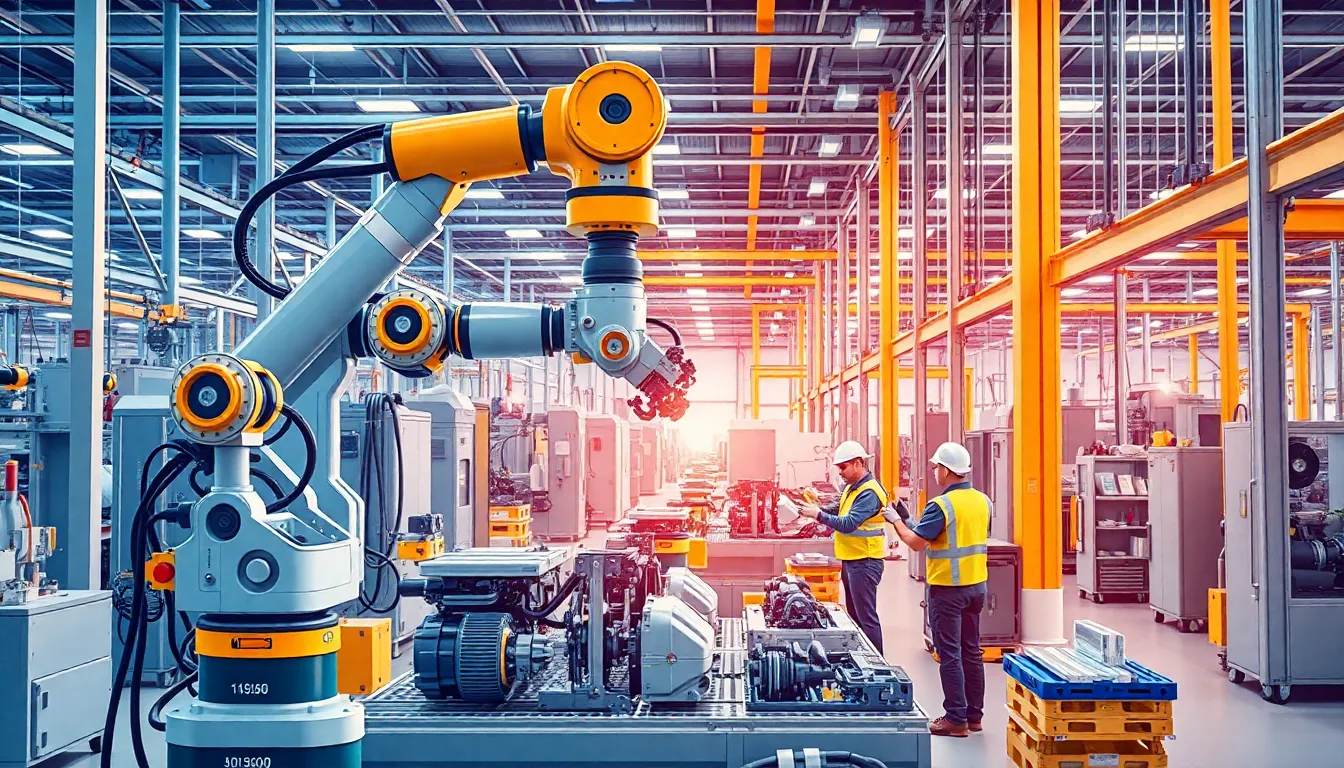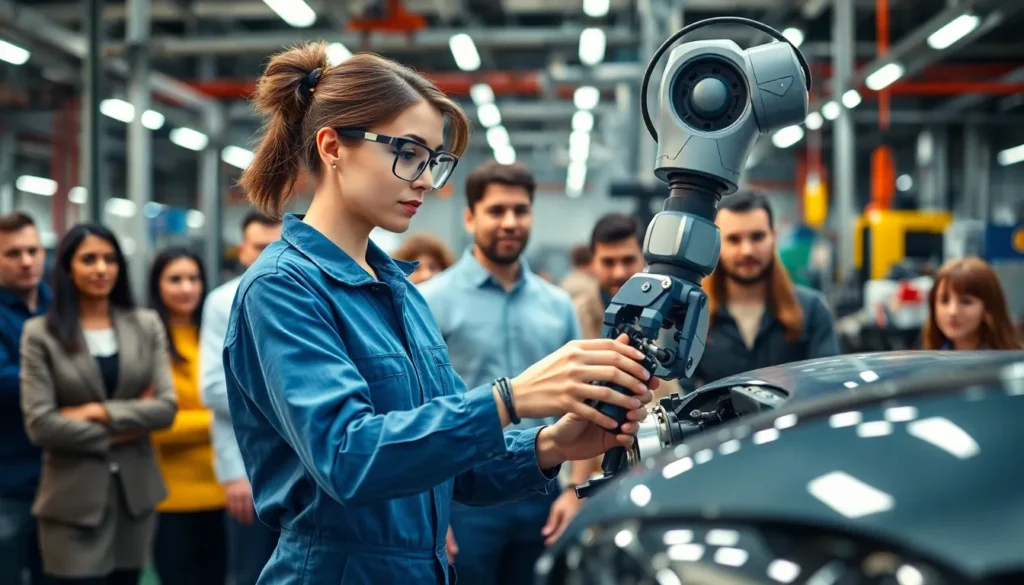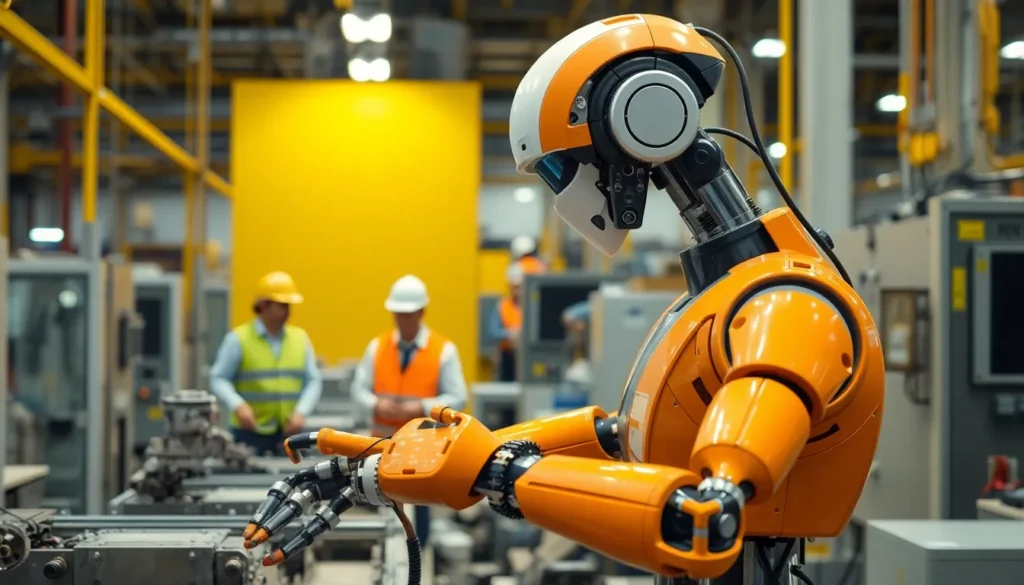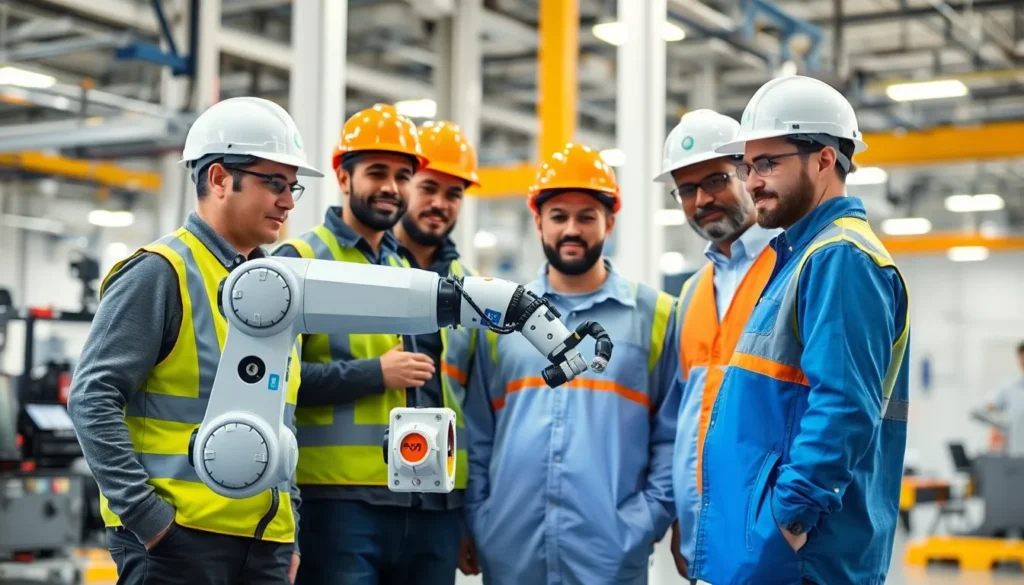Robotics isn’t just for sci-fi movies anymore. It’s infiltrating our daily lives in ways that’ll make you wonder if you’re living in the future. From manufacturing plants where robots assemble everything from cars to coffee machines, to hospitals where they assist in surgeries, these mechanical marvels are proving they can do more than just dance at a party.
Imagine a world where robots handle the heavy lifting, leaving humans free to focus on creativity and innovation. Whether it’s delivering packages at lightning speed or vacuuming your floors while you binge-watch your favorite series, the applications of robotics are both impressive and, let’s face it, a little mind-blowing. Buckle up as we dive into the fascinating ways robotics is reshaping industries and enhancing everyday life.
Applications Of Robotics
Robotics plays a vital role in various sectors, enhancing efficiency and reducing costs. Manufacturing leads in adopting robotics, utilizing automated systems for tasks like assembly, welding, and painting. These robots improve precision and speed while minimizing human error.
Healthcare also benefits significantly from robotics. Surgical robots assist surgeons, allowing for minimally invasive procedures that reduce recovery times for patients. Rehabilitation robots aid in patient recovery, providing assistance with physical therapy routines.
Agriculture is another area experiencing a transformation due to robotics. Drones monitor crop health, collect data, and optimize irrigation systems. Autonomous tractors perform planting and harvesting, increasing productivity while minimizing labor costs.
Logistics and warehousing employ robots for inventory management and order fulfillment. These systems streamline operations, enabling efficient sorting and packaging processes. As a result, companies realize faster delivery times and enhanced customer satisfaction.
In the field of education, robotics offers interactive learning experiences. Educational robots facilitate STEM learning, engaging students in programming and problem-solving. Robotics competitions foster collaboration and innovation among participants.
Service industries leverage robotics for customer engagement. Robots answer questions, provide information, and even handle transactions in retail environments. This technology improves customer experience and allows staff to dedicate time to more complex tasks.
Robotics continues to evolve, creating new opportunities across industries. As technology advances, the integration of robotics has the potential to change how various sectors operate, driving innovation and efficiency.
Industrial Applications

Robotics plays a significant role in transforming industrial processes, particularly in manufacturing and warehousing. Both sectors benefit from increased efficiency and accuracy.
Manufacturing Robots
Manufacturing robots automate key tasks, including assembly, welding, and painting. These machines operate with precision, speeding up production rates and reducing waste. Companies utilizing robotic systems report up to 30% increases in efficiency. Additionally, robots handle repetitive tasks, allowing human workers to focus on complex problem-solving and innovation. Notable examples include robotic arms that assemble vehicles and collaborative robots assisting workers on production lines.
Automation In Warehousing
Automation in warehousing revolutionizes inventory management and order fulfillment. Robots transport goods, sort items, and manage stock levels, significantly enhancing operational speed. Evidence shows that warehousing operations employing robotics can achieve 40% faster shipping times. Autonomous mobile robots navigate large facilities, ensuring efficient product retrieval. Systems integrating robots with software also improve accuracy, reducing the likelihood of errors in order processing. These advancements lead to higher customer satisfaction and streamlined logistics.
Healthcare Applications
Robotics significantly influences the healthcare sector, enhancing surgical precision and patient recovery. Technologies like surgical robotics and rehabilitation robotics exemplify this trend.
Surgical Robots
Surgical robots revolutionize operating rooms with advanced capabilities. These systems allow surgeons to perform minimally invasive procedures that reduce patient recovery time. Techniques involving robotic assistance result in smaller incisions, leading to less pain and quicker healing. For example, da Vinci Surgical System enables complex surgeries with greater precision, contributing to improved surgical outcomes. Hospitals that use surgical robots report increased efficiency and reduced postoperative complications, showing a marked decrease in the length of hospital stays.
Rehabilitation Robotics
Rehabilitation robotics supports patient recovery through interactive and adaptive devices. These systems aid in physical therapy by providing consistent assistance tailored to individual needs. For instance, robotic exoskeletons help patients regain mobility after strokes or spinal injuries. Outcomes indicate that patients using these devices achieve faster recovery rates and improved muscle strength. Research highlights a significant increase in patient engagement during therapy sessions, demonstrating how robotics fosters motivation and enhances rehabilitation processes.
Service Robotics Applications
Service robotics plays a crucial role in enhancing efficiency and customer experience across various sectors. These robots automate tasks and improve interactions, redefining how services are delivered.
Hospitality Industry
In the hospitality industry, robots handle front desk operations, room service, and even cleaning tasks. Robots like the Savioke Relay deliver items directly to guest rooms, improving convenience and satisfaction. Reports indicate that hotels using service robots see an increase in guest happiness by up to 20%. Autonomous robots also support staff by managing check-ins and providing guests with information, allowing human employees to focus on personalized service.
Cleaning Robots
Cleaning robots streamline maintenance tasks in both residential and commercial settings. Devices like the iRobot Roomba vacuum autonomously clean floors, saving time and effort for users. In commercial spaces, machines like the Brain Corp’s BrainOS-equipped robots can operate without human intervention, efficiently capturing waste and maintaining cleanliness. Studies show that facilities using cleaning robots can reduce cleaning costs by 30% while enhancing overall hygiene. These advancements make daily operations more efficient and help create a cleaner environment.
Agricultural Applications
Robotics is revolutionizing agriculture by enhancing efficiency and precision in farming practices. Automated systems support farmers in managing crop production and resources more effectively.
Precision Farming
Precision farming utilizes advanced robotics to analyze soil conditions and crop health. Drones equipped with sensors collect data on moisture levels and nutrient content. This information enables farmers to make informed decisions about irrigation and fertilization. Such targeted actions lead to increased yields and resource conservation. Reports indicate that precision agriculture can improve production by 15-20%. Robotics helps farmers monitor fields in real-time, promoting sustainable practices and reducing waste.
Harvesting Robots
Harvesting robots automate the process of gathering crops, significantly reducing labor costs. These machines operate efficiently, capable of harvesting fruits and vegetables with minimal damage. Examples include strawberry-picking robots that navigate fields and select ripe fruit. Farms employing these robots report up to 30% faster harvesting times while maintaining quality. The use of harvesting robots alleviates labor shortages faced by agricultural sectors, ensuring timely crop collection and improving overall productivity.
Conclusion
Robotics is undeniably reshaping the landscape of various industries by enhancing efficiency and productivity. As technology continues to advance, its applications will likely expand even further. The integration of robots in manufacturing, healthcare, agriculture, logistics, education, and service sectors not only streamlines operations but also allows humans to focus on more creative and strategic tasks.
The transformative impact of robotics is evident in improved precision, reduced costs, and enhanced customer experiences. As businesses and organizations embrace these innovations, the potential for growth and development in both the economy and society remains vast. The future of robotics promises exciting possibilities that will continue to redefine how work is done and how lives are lived.



